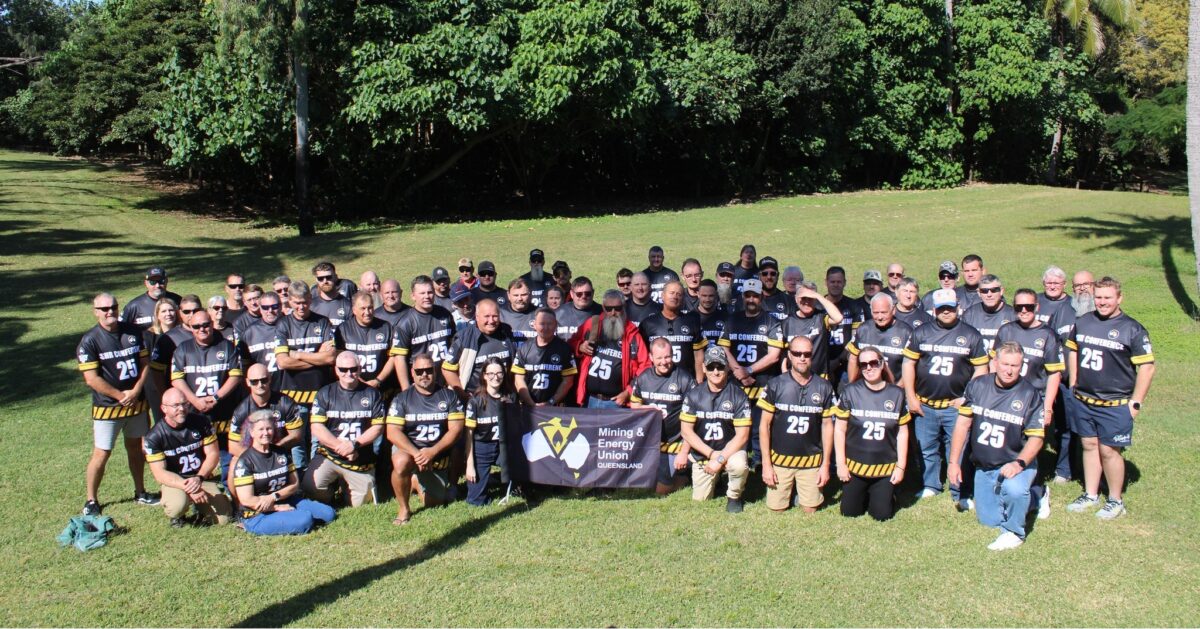June 27, 2025
More than 70 Site Safety and Health Representatives (SSHRs) from across Queensland gathered in Mackay in June for the 2025 SSHR Conference – an intensive five-day event focused on equipping workplace safety leaders with the tools, knowledge, and confidence to keep their workmates safe.
With 20 first-time attendees, the conference underscored the growing importance of SSHRs in Queensland’s mining industry and the need to keep up to date with emerging issues.
Queensland District ISHRs Jason Hill, Blair Kidd and Craig Smith led the conference with a strong message: “Safety is union business – and it’s up to us to lead from the front.”
The conference provided a mix of expert presentations, practical training, and peer-to-peer learning. A key focus was on empowering SSHRs, especially those newly elected to their roles, to return to their sites with the confidence to challenge unsafe practices and audit safety plans effectively.
Topics ranged from respiratory health and fatigue management to risk assessment and hazard identification.
Dr Bob Cohen (Clinical Professor of Environmental and Occupational Health Sciences, University of Illinois) and Dr Nikky LaBranche (Dust & Respiratory Health Program Lead, Minerals Industry Safety and Health Centre, The University of Queensland) delivered critical updates on respiratory health risks, including dust exposure, welding fumes, and spirometry standards.
The United Mine Workers of America’s Safety representative Josh Roberts gave an update on the state of OHS and safety standards in the United States.
Professor Maureen Hassall (Director of the Sustainable Minerals Institute’s Industrial Safety and Health Centre at The University of Queensland) led a full-day session on risk management, emphasising the need for SSHRs to understand hazards deeply and implement hard controls.
“It’s about knowing what can go wrong, and making sure it doesn’t,” she said.
Attendees also examined past incidents involving cranes and slings to identify gaps in previous safety protocols. These case studies helped SSHRs understand how to audit current practices and prevent repeat failures.
The conference also addressed emerging risks, such as the psychosocial impacts of digitalisation and algorithmic-managed work, with insights from Professor Michael Quinlan (Emeritus Professor of Industrial Relations, School of Management and Governance, University of New South Wales). MEU National Vice President Stephen Smyth provided updates on national and international occupational health and safety developments.
Beyond physical safety, the conference highlighted the importance of mental health. A session with Mates in Mining reinforced that looking out for each other’s wellbeing is just as vital as managing physical hazards.
Thanks were extended to Queensland Safety Policy Officer Stephanie Kameric, who presented valuable statistics on reported safety events, helping SSHRs understand trends and areas for improvement.
With a new conservative Queensland Government in place, concerns were raised about upcoming policy reviews and what might be triggering them. The MEU committed to working through these changes with transparency and continued advocacy for worker safety.
As the conference wrapped up, the message was clear: SSHRs are not just safety reps. They are leaders, educators, and protectors of their crews. And with the right support, they are ready to take that responsibility back to their mines.

